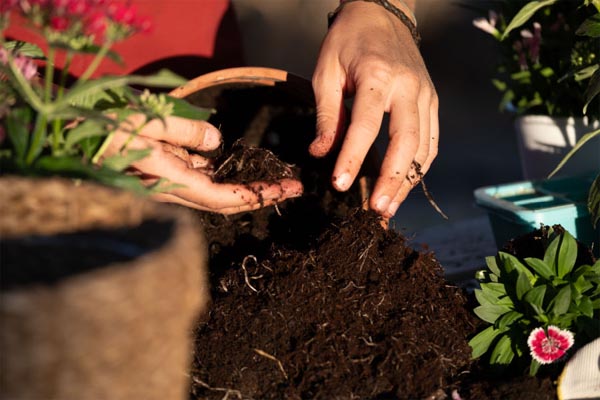
Enhancing Soil: A Guide to Making it Light and Loamy
Soil is the foundation of successful gardening, and its quality directly impacts plant growth and health. One crucial aspect of soil management is its texture, with “light and loamy” being the ideal condition for many plants. Light, loamy soil provides excellent drainage, aeration, and nutrient retention, creating an optimal environment for roots to thrive. In this guide, we’ll explore various techniques and amendments to transform your soil into a rich, fluffy loam that plants will love.
Understanding Soil Texture:
Before diving into soil enhancement methods, it’s essential to understand soil texture. Soil texture refers to the relative proportions of sand, silt, and clay particles in the soil.
- Sand particles are the largest and provide good drainage but have poor nutrient retention.
- Silt particles are smaller than sand and help improve soil fertility.
- Clay particles are the smallest and hold water and nutrients but can lead to poor drainage and compacted soil.
Light, loamy soil typically consists of a balanced mixture of these particles, allowing for adequate drainage while retaining moisture and nutrients.

Also Read This : Cultivate Your Own Onion Plant in a Water Bottle with This Step-by-Step Guide!
Enhancing Soil Texture:
Several methods can be employed to improve soil texture and create a light, loamy consistency:
Organic Matter:
Incorporating organic matter is one of the most effective ways to improve soil texture. Organic matter, such as compost, decomposed manure, or leaf mold, adds valuable nutrients and improves soil structure. It also encourages beneficial microbial activity, which aids in breaking down organic material and releasing nutrients to plants.
Sand:
Adding sand to soil can help improve drainage and prevent compaction. However, it’s essential to choose the right type of sand – coarse sand is preferable over fine sand, as fine sand can exacerbate drainage issues.
Also Read This : Unlocking Coriander’s Summer Secret: Essential Tips for Thriving Growth
Perlite and Vermiculite:
Perlite and vermiculite are lightweight, mineral-based additives that improve soil aeration and drainage. These materials can be mixed into the soil to increase its porosity and create a lighter texture.
Gypsum:
In clay-heavy soils, gypsum can help break up clay particles and improve soil structure. Gypsum works by displacing sodium ions on clay particles, allowing them to separate and create larger pore spaces, thereby improving drainage and aeration.
Also Read This : Transform Your Home into a Fragrant Oasis: Must-Plant Summer Flowers for April
Peat Moss:
Peat moss is another organic amendment that can improve soil texture. It helps retain moisture while also improving soil structure and drainage. However, it’s important to consider the environmental implications of using peat moss, as its extraction can contribute to habitat destruction in peatlands.
Implementing Soil Enhancement Techniques:
Now that we understand the various amendments that can improve soil texture let’s discuss how to implement these techniques effectively:
Soil Testing:
Before adding any amendments, conduct a soil test to determine its current pH and nutrient levels. This will help you identify any deficiencies or imbalances that need to be addressed.
Also Read This : Summer Soil Success: Your Essential Guide to Preparing the Perfect Planting Ground
Application Rates:
Follow recommended application rates for each amendment based on your soil test results and the specific needs of your plants. Adding too much of certain amendments can have adverse effects on soil pH and nutrient levels.
Mixing:
Thoroughly mix amendments into the soil to ensure even distribution and incorporation. Use a garden fork or tiller to work the amendments into the top few inches of soil.
Mulching:
After amending the soil, apply a layer of organic mulch, such as straw or wood chips, to help conserve moisture and further improve soil structure over time.
Also Read This : Revive Your Dying Plant: The Miracle of Free Fertilizer That Sparks Blooms!
Maintenance:
Regularly monitor soil moisture levels and plant health to ensure that your soil amendments are providing the desired benefits. Reapply amendments as needed to maintain optimal soil texture and fertility.

Transforming your soil into a light, loamy texture is a rewarding endeavor that can significantly improve the health and productivity of your garden. By incorporating organic matter, sand, perlite, vermiculite, gypsum, and peat moss, you can create an ideal growing environment for a wide range of plants. Remember to conduct soil tests, follow recommended application rates, and monitor soil moisture levels to achieve long-term success. With proper soil management techniques, you’ll be well on your way to cultivating a thriving garden filled with lush, healthy plants.
Also Read This : Mastering the Art of Watering: Keeping Your Garden Green Year-Round




